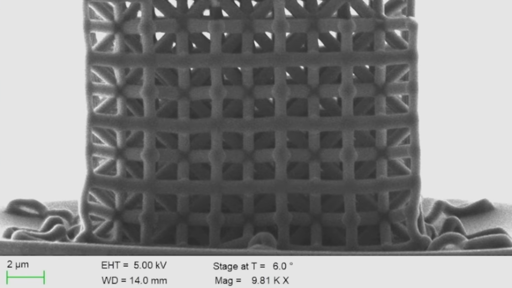Chinese Scientists Create Cyborg Bees That Can Be Controlled Like Drones for Undercover Military Missions
-
cross-posted from: https://jlai.lu/post/22560365
-
cross-posted from: https://jlai.lu/post/22560365
Y'all remember that #DeathTo Black Mirror episode?
-
cross-posted from: https://jlai.lu/post/22560365
Not-so-fun fact: Surveillance drones, that we know of, go back as far as the Vietnam War.
The first UAV attacks date back to the middle of the 1800's.
-
cross-posted from: https://jlai.lu/post/22560365
Well that’s awful.
-
Not-so-fun fact: Surveillance drones, that we know of, go back as far as the Vietnam War.
The first UAV attacks date back to the middle of the 1800's.
No they don’t.
-
cross-posted from: https://jlai.lu/post/22560365
The power source is about 30 times heavier than the bee can carry. Here's for hoping that they absolutely never are able to make this project work.
-
The power source is about 30 times heavier than the bee can carry. Here's for hoping that they absolutely never are able to make this project work.
What? You don’t want bad actors hacking the bees and sending them inside your ears to cause fatal internal damage? Why are you against progress?!
-
Y'all remember that #DeathTo Black Mirror episode?
We all do, yes
-
What? You don’t want bad actors hacking the bees and sending them inside your ears to cause fatal internal damage? Why are you against progress?!
Alright. You convinced me lol
-
Alright. You convinced me lol

-
cross-posted from: https://jlai.lu/post/22560365
But not for pollination?
-
cross-posted from: https://jlai.lu/post/22560365
The researchers are hoping that the tiny cyborg could allow the military to infiltrate hard-to-access space or be used in search and rescue missions to find survivors in natural disasters, according to a research paper.
In other words the researchers are clawing at reasons to justify their research. The Chinese military aren't looking into this, following commands 9 out of 10 times isn't reliable enough to even start development.
This is about as strategically useful as a bluetooh controlled robo-roach.
-
No they don’t.
The first UAV in the 1800s were incendiary balloons, Austrian attack on Venice.
A. M. Low was a pioneer in rocket guidance systems, planes, etc. In 1917 the "flying bomb" (a controlled airplane) was developed, and later developed into the Kettering Bug - a bomb with wings - which had a terrible success rate and never got used in combat. You can see a reproduction in Dayton, Ohio, at the museum for the Air Force.
Target drones (training drones for military pilots) were made by Radioplane and sold to the Army in the 1940s. That led to the SD-2 Overseer in the 1950s.
Which led to the Lightning Bug, based on target drone designs, used to monitor the Chinese, then Vietnam. They would deploy a parachute so they could be picked up mid-air so they wouldn't fall into foreign hands. China shot down a few of them and set the shot them down and set those drones up for public display.
Drones have a much longer history than you'd think!
-
The power source is about 30 times heavier than the bee can carry. Here's for hoping that they absolutely never are able to make this project work.
According to all known laws of aviation, there is no way that a bee should be able to fly. Its wings are too small to get its fat little body off the ground. The bee, of course, flies anyways. Because bees don't care what humans think is impossible.
-
But not for pollination?
No, only war
-
But not for pollination?
Why would you bother mind controlling bees in order to make them do the thing they would be doing anyway?
-
Why would you bother mind controlling bees in order to make them do the thing they would be doing anyway?
Would be cool if you could control the little bee to do a dance that makes the whole hive swarm to a very specific place.
-
The researchers are hoping that the tiny cyborg could allow the military to infiltrate hard-to-access space or be used in search and rescue missions to find survivors in natural disasters, according to a research paper.
In other words the researchers are clawing at reasons to justify their research. The Chinese military aren't looking into this, following commands 9 out of 10 times isn't reliable enough to even start development.
This is about as strategically useful as a bluetooh controlled robo-roach.
-
What? You don’t want bad actors hacking the bees and sending them inside your ears to cause fatal internal damage? Why are you against progress?!
Will happen anyway, so rather embrace it as early as possible so that we would be those bad actors and not the sucker good actors on the receiving end.
-
The first UAV in the 1800s were incendiary balloons, Austrian attack on Venice.
A. M. Low was a pioneer in rocket guidance systems, planes, etc. In 1917 the "flying bomb" (a controlled airplane) was developed, and later developed into the Kettering Bug - a bomb with wings - which had a terrible success rate and never got used in combat. You can see a reproduction in Dayton, Ohio, at the museum for the Air Force.
Target drones (training drones for military pilots) were made by Radioplane and sold to the Army in the 1940s. That led to the SD-2 Overseer in the 1950s.
Which led to the Lightning Bug, based on target drone designs, used to monitor the Chinese, then Vietnam. They would deploy a parachute so they could be picked up mid-air so they wouldn't fall into foreign hands. China shot down a few of them and set the shot them down and set those drones up for public display.
Drones have a much longer history than you'd think!
Soviet surveillance drones, which Ukraine has used a few times as suicide drones, were not much more complex than a radiola. Had a flight program in the form of perforated tin disc, if I remember correctly, and an electro-mechanical system of following those instructions (not a computer). They'd be just sent on preprogrammed routes, make photos, those retrieved and analyzed on return. No radio communications, stealthy enough for their purpose.







